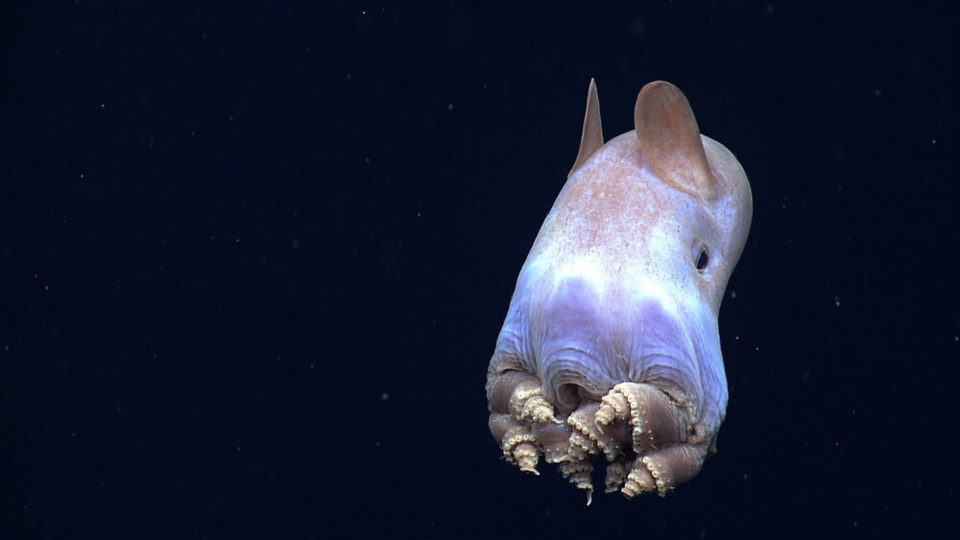In 1983, Verena Tunnicliffe was floating about 250 kilometres off the coast of Vancouver Island when a call came over the radio — geologists on a nearby sister ship had dredged up something strange from the sea floor.
“We got all these strange smelly worms,” Tunnicliffe remembers them saying. “Would you like them?”
The deep-sea researcher was the only one with a submarine, and a year later, her exploration team had raised enough money to go back.
When Tunnicliffe finally descended over 2,000 metres to a patch of ocean floor, everything was dark, save for the light on the submersible.
Below them, two tectonic plates diverged, allowing cold sea water to seep through the Earth’s crust. Super-heated by molten lava, the water shoots back into the ocean as a 400-degree-Celsius hot soup of nutrients and chemicals.
The crew crept along the bottom in an exercise Tunnicliffe describes as “trying to explore the Rocky Mountains with a flashlight.”
First came white mats of bacteria. Then, out of the darkness, huge mounds of “gorgeous” white tube worms emerged, the metre-and-a-half-long creatures topped with red plumes. Inside, the scientist would later learn they had no guts, but a body filled with vent-fed bacteria that feed the worms.
And in a potential window onto the origin of life on a hot, young Earth, a bacteria found at the B.C. vents was later discovered to survive temperatures of 121 C — .
“Just covered, dripping with animals,” Tunnicliffe said, pointing to at least 12 distinct species found there and not seen anywhere else on Earth.
A year later, Tunnicliffe would find vents at an enormous scale, hydrothermal openings that form chimneys up to 45 metres tall known as “black smokers.”
In the decades that followed, over 800 extinct and active chimneys would be discovered. The deep-sea scientist would have 10 undersea creatures named after her, and go on to be awarded the for her pioneering work.
Soaring up to the height of buildings, the underwater vents and their chimneys can often contain ore-grade metal deposits of gold, copper and silver — making them an attractive potential source of wealth if only someone could figure out how to mine them.
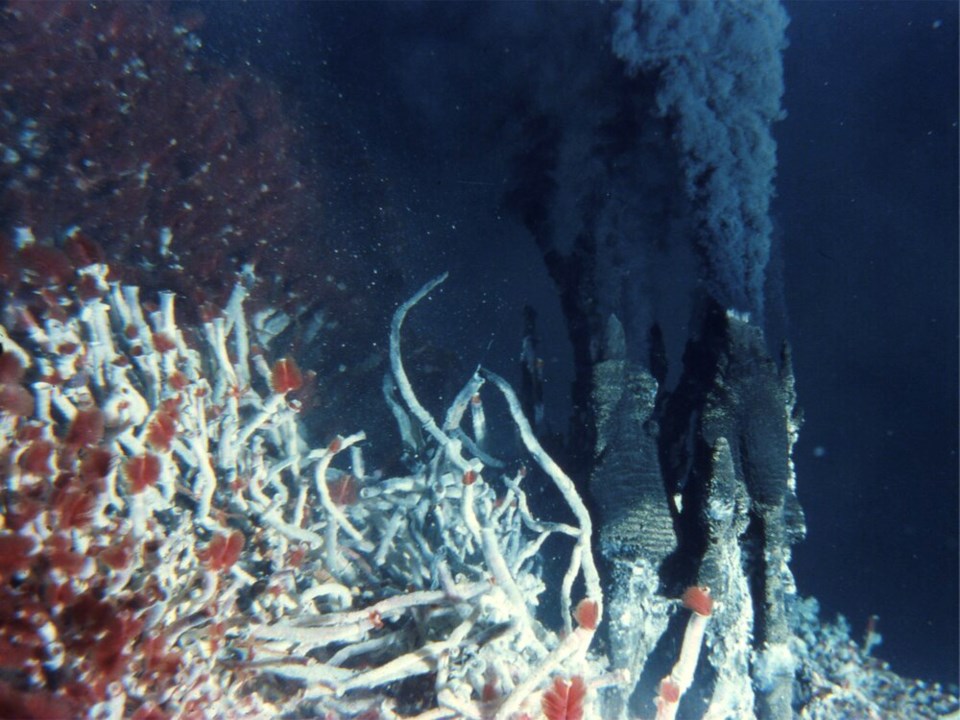
By 2003, the Endeavour Hydrothermal Vents would be the first marine protected area in Canada, and the first “hot vents” protected from human exploitation in the world.
But in other stretches of deep ocean, a battle that had been quietly brewing for decades was about to enter a new phase of heightened tensions, raising the prospect of a race for some of the ocean’s deepest known riches.
At the centre of the controversy sits The Metals Company, a Vancouver-based mining firm looking to harvest the minerals required to wean the world off fossil fuels and on to a more sustainable path.
The found this year that deep-ocean mines could provide up to 45 per cent of all the world’s critical metal needs by 2065.
But for scientists like Tunnicliffe, a race to the bottom of one of the planet’s least explored realms comes with huge risks, both to its poorly understood ecosystems and their link to an ocean carbon pump that's thought to scrub 30 per cent of human-produced greenhouse gas emissions from the atmosphere every year.
“We're talking about a group of organisms that have changed the way we understand life on this planet, all the way back to the origin of life, how life works in highly extreme settings where we never thought any life could live,” said Tunnicliffe.
“It's fuelled our search for life on other planets.”
Three pots of deep-sea treasure and a Russian sub
The first sign that the ocean floor could hold minerals useful to humanity date back over 150 years to the HMS Challenger expedition, a voyage many now cast as the foundation of modern oceanography.
The expedition would be the first to probe the Mariana Trench with bathymetric soundings and verify the existence of the Mid-Atlantic Ridge, the longest mountain range in the world and the separation line where two crustal plates diverge, expanding the Atlantic’s sea floor.
But it was on March 7, 1873, when crew from the expedition dredged on deck “several peculiar black oval bodies which were composed of almost pure manganese oxide” that humanity got its first look at what wealth lay deep out of sight.
The metallic masses start with a core — a sunken shark tooth, tiny fossil or piece of basalt rock. Over tens of millions of years, minerals precipitate out of the surrounding sea water, forming one metallic layer after another.
Often growing to the size of a potato, the nodules are rich in nickel, copper, cobalt and manganese — all metals highly sought after by battery makers and other technology manufacturers.
Drop down 4,000 metres below parts of the Pacific Ocean, and they can be found scattered across the surface of abyssal plains, flat stretches of relatively unexplored ocean that cover roughly half the surface of the Earth.
But like the precious metals found near some hydrothermal vents, in the past, it was either too expensive or the technology didn’t exist to pull the nodules from the deep.
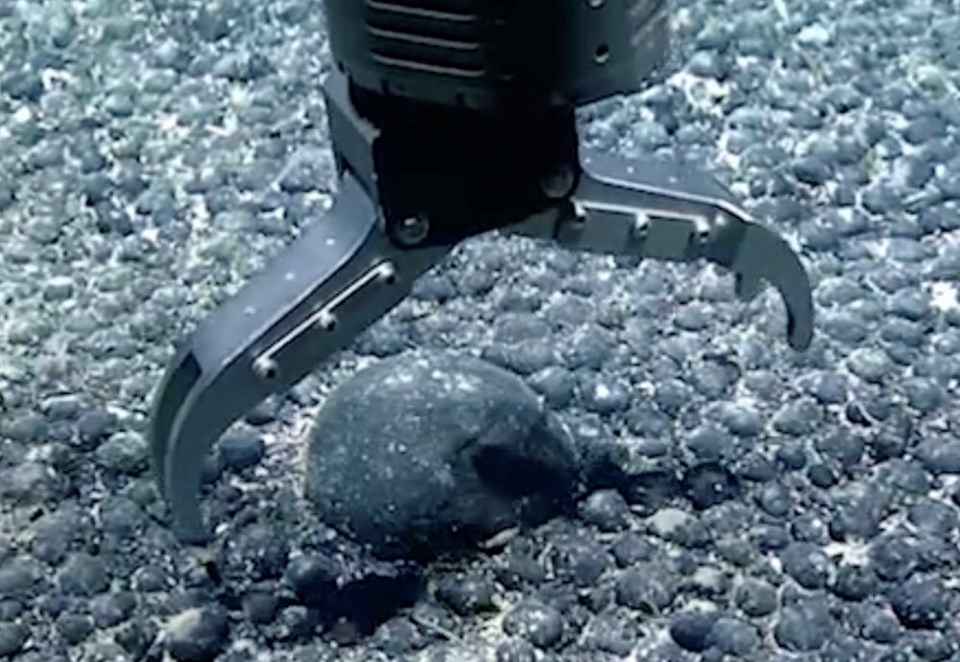
It would take more than 90 years before the idea of mining the metallic nodules would once again capture the public’s attention.
In 1965, mining engineer John L. Mero published the influential book “,” sparking wide interest in the nodules at the time when they were thought to be an infinite resource growing faster than they could be harvested.
A year later, Malta’s ambassador to the United Nations, Arvid Pardo, made an impassioned plea to the General Assembly calling on coastal states to end the expansion of exclusive economic zones and , not only for “those who possess the required technology,” but “in the interest of mankind.”
“That's where the idea came that whatever we find out there really belongs to everyone, and that it needs also to be fostered for the future generations,” said Tunnicliffe.
The question revolved around the idea that the ocean’s riches shouldn’t just belong to the wealthiest nations with the resources to exploit the sea floor. That set off a multi-decadal legal process to regulate mining under international waters.
But the pendulum would continue to swing and in the early 1970s, a commodity boom drove further interest in deep-sea mining. So when eccentric billionaire Howard Hughes announced he was building a giant ship to mine the ocean’s abyss, the story was plausible.
To the public, the expedition would be the first attempt to mine the deep sea’s metal nodules. In reality, it was an elaborate ruse.
In 1968, U.S. authorities had learned had sunk in over 5,000 metres of water, roughly 2,500 kilometres northwest of Hawaii.
Working with Hughes and his new Glomar Explorer ship, the U.S. planned to recover the submarine and its nuclear-tipped torpedoes.
In 1975, reporting by the Los Angeles Times and later would reveal the outline of what some have described as “the most daring covert operation in history.”
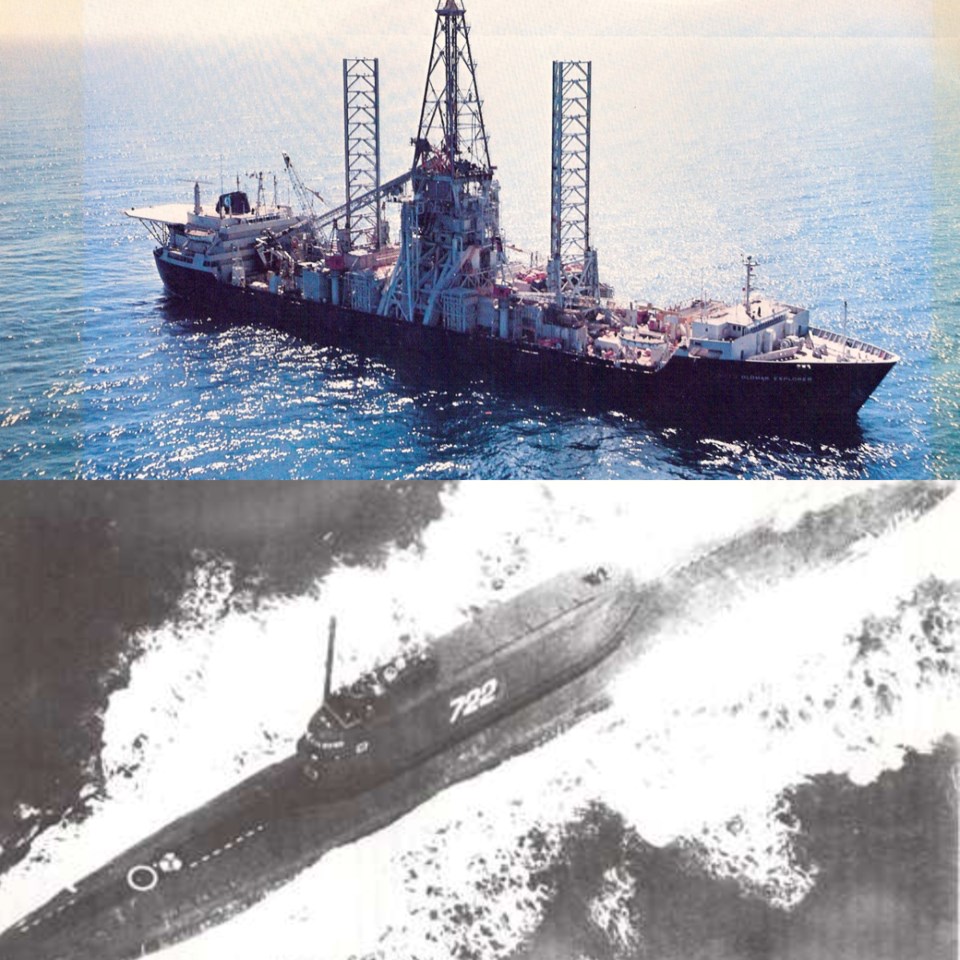
The story has shifted throughout the years, some suggesting most of the submarine was recovered, others stating that it broke up as it was pulled from the depths to the ship’s moon pool.
Whatever the case, the that emerged from what was declassified as in 2010, also helped set off a reckoning over who should have access to the deep — and in particular, the riches sitting on its abyssal floor.
A half-dozen competing international consortia would begin piloting deep-sea mining in the late 1970s. But by the early 1980s, commodity prices dropped and that work was shelved as companies cut back their research budgets. As German historian put it, deep-sea mining was essentially “dead in the water.”
Concerns over the environment and equity for less wealthy nations eventually led the United Nations to draw up the International Seabed Authority — also known as the ISA or ‘the Enterprise’ — in 1982 under the UN Convention on the Law of the Sea (UNCLOS), and ratify its existence in a 1994 implementation agreement.
Today, the Jamaica-based body is made up of 167 member nations and the European Commission.
A custodian of the deep sea as a “,” the ISA’s dual mandate is to facilitate the extraction of mineral resources from the seabed, while at the same time protecting the deep-sea environment.
The prevailing sentiment at the time was that land-based mining was much more profitable, “and how are you gonna do this anyway?” said Tunnicliffe.
Even if the technology and financing were there to pull the metals from the deep, no regulations existed to allow for mining in international waters.
That is until an ambitious company from Vancouver, B.C., triggered a countdown that could open the floodgates for deep-sea mining and prompt a new age of resource exploitation.
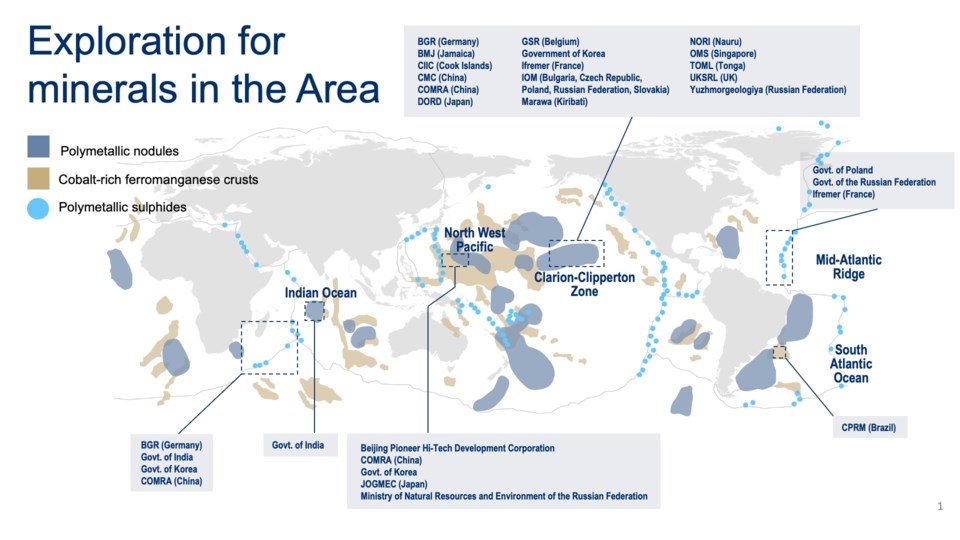
Halfway through a two-year countdown
On an overcast day in June 2022, a handful of activists, scientists and artists dedicated to sea life unfurled an ocean-blue banner and took aim at The Metals Company, whose headquarters sits in a nondescript Vancouver office tower five blocks away.
“Imagine house-sized machines crawling along the seabed and indiscriminately vacuuming up the contents,” said Michelle Connolly, an ecologist who travelled 10 hours from Prince George to help lead the rally near the city’s seawall.
Through its wholly owned subsidiary, , The Metals Company has an exploratory licence covering four areas in the Clarion-Clipperton Fracture Zone — a nodule-rich area halfway between Hawaii and Mexico where the company is looking to explore nearly 75,000 square kilometres of sea bed.
That contract is among 31 the ISA has handed out since 2001, when the price of metals began to surge again.
Until 2010, the international body largely granted contracts to national agencies. But as the price of metals climbed and technology developed, several companies have looked to get in the race.
“If you remember, that was when people were going around knocking down copper statues and stealing copper wires,” said Tunnicliffe. “That's what suddenly turned back to looking at the deep sea.”
Nineteen different companies have sought to probe abyssal plains for the polymetallic nodules.
Another seven contracts have been granted to companies looking to mine hydrothermal mineral deposits around hot vents.
And in a third target for submarine mining, the ISA has approved five exploration contracts for underwater mountain ranges known as seamounts, where underwater peaks and ridges are at times covered in crusts of cobalt, platinum, manganese and rare earth metals — a multi-million-year process of accretion deposited like a 30-centimetre-thick cap of black snow.
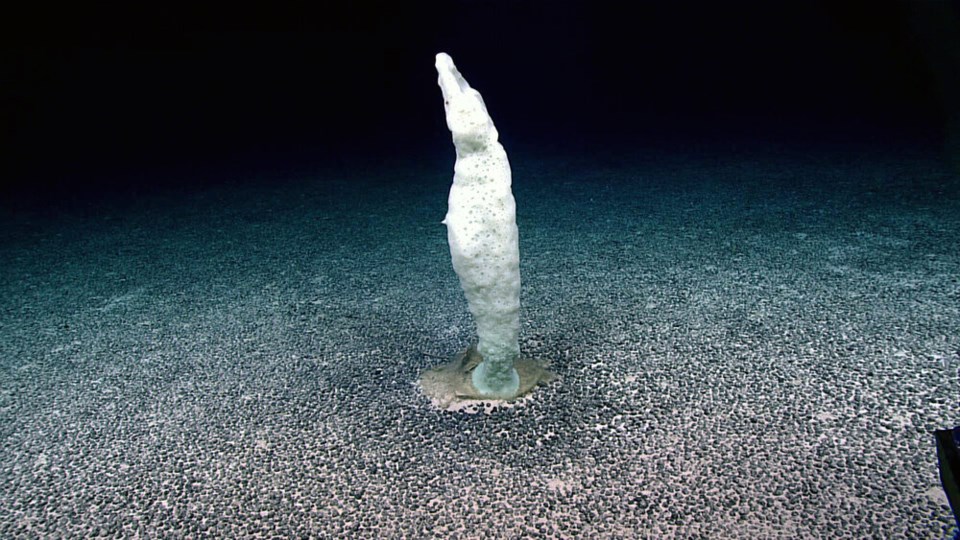
All of those contracts are exploratory and none of them include provisions to carry out industrial-scale mining, largely because the ISA has not yet written the rules of the road.
That changed in June 2021, when the small island nation of Nauru, acting as a sponsor of Nauru Ocean Resources, approached the ISA, requesting it establish a set of regulations that would govern how companies could mine the deep.
Through an obscure clause, which set off a two-year countdown under the United Nations Convention on the Law of the Sea, ISA must finalize a set of regulations.
A final decision is expected to be released in July 2023, according to Tunnicliffe, who in the past, led a mining working group at the ISA, providing expert scientific advice to help draft anticipated regulations around deep-sea mining.
Applications to commercially mine the seabed will still have to be approved on a case-by-case basis, with each one requiring an environmental review process, said the scientist.
“But at that point,” she said. “The inevitability is there.”

Companies reaching a technology threshold
Despite concerns, the experiments keep coming.
In 2017, Japan conducted a pilot mining test in its Economic Exclusion Zone around Okinawa. And in 2019, began testing a collector vehicle to suck up nodules in exploration areas handed to Belgium and Germany.
But according to critics and experts interviewed for this story, The Metals Company appears to be leading the field.
In May 2022, the Vancouver-based company said it successfully trialled a in the North Atlantic.
Deployed from the 228-metre-long former drill ship the Hidden Gem, the nodule collector was dropped to nearly 2,500 metres, marking the first time the vehicle was successfully tested, driving over a kilometre at “ultra-deep-water temperatures and pressures.”
Later this year, the company plans to take its trials to the Clarion-Clipperton Fracture Zone, where it will test the collector and a four-kilometre-long riser hose — both a conduit for the mined nodules and an umbilical linking undersea operations with power and controls beamed down from a surface ship.
When operational, a full-size treaded vehicle is expected to travel across the sea floor blasting the sediment with water jets to dislodge the nodules and pull them into its interior. The company says 90 per cent of the sediment sucked up with the nodules will be separated inside the collector and ejected behind the machine in a plume before settling back onto the sea floor.
From there, nodules will be sent up the riser tubes to within a few hundred metres of the surface, where they’ll be scrubbed of the remaining sediment, shipped to a port and offloaded for processing.
Having made landfall, the “battery in a rock,” as the company puts it, is expected to provide vast quantities of to power an EV revolution.
Its vision, the company says, is to avoid the worst effects of land-based mining while making up for a global shortfall in metals as the world moves to decarbonize.
According to an released in May, the company is looking to begin small-scale commercial production by 2024.
Describing the abyssal plain as a “vast marine desert,” CEO Gerard Barron said there are enough metals in just two of the company’s contract areas to power 280 million electric vehicles, roughly equivalent to the entire fleet of U.S. passenger vehicles.
The wealth created from that mining, said Barron, would partially flow to the island nations of Tonga, Kiribati and Nauru. But for many leaders across the Pacific and beyond, the push to mine the ocean's floor is nothing short of “.”
A ‘wasteland’ no more
Despite the company’s claims, many scientists and environmental groups have raised concerns deep-sea mining could endanger some of the ecosystems least known to scientists.
Half a century ago, when the ISA was in its infancy, the oceans’ abyssal plains were considered to be a “wasteland” of barren ecosystem where life barely existed, said Catherine Coumans, deep-sea mining campaigner at the NGO watchdog MiningWatch.
“We now know that nothing could be further from the truth,” she said.
A suggested the only reason the nodules remain on the seafloor surface — and therefore continue to grow — is because of a “symbiosis” where star fish, sea cucumbers, mollusks and the elephant-eyed (dumbo) octopus forage in their nooks and crannies. looking at sea creatures living on the abyssal plains found their density more than doubled in fields of dense nodules.
“These nodules are a habitat,” said Coumans. “They have fauna on them that are linked to the rest of the ecosystem up the water column to the surface. There’s really nothing like it on Earth.”
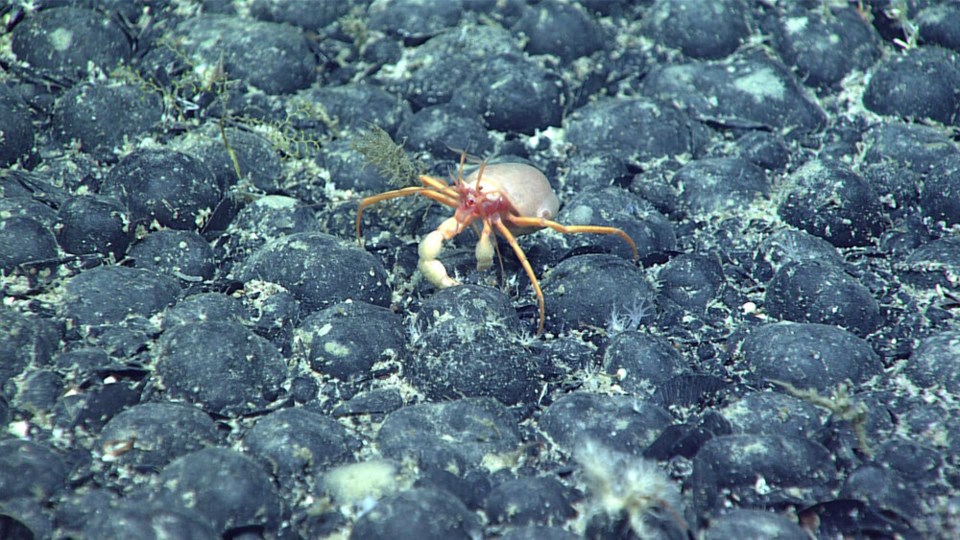
As the largest habitat on the planet, the deep sea is full of undocumented life that could prove an immense resource for everything from medicine to humanity’s understanding of the world’s carbon cycle, say experts.
Land-based hydrothermal vents like those found in in the U.S. have already revolutionized the polymerase chain reaction (PCR) tests critical to the global response to the COVID-19 pandemic.
Four decades after their discovery, Tunnicliffe and 15 other experts found hydrothermal vents are much more than a highlight reel of extreme forms of life.
The vents, found the , spew vast amounts of energy entering the deep sea, creating methane, iron, hydrogen and sulphide plumes that form essential building blocks for plankton higher up in the water column.
And in a direct sink against the release of a powerful greenhouse gas, life surrounding the vents was estimated to consume up to 80 per cent of released methane — preventing it from bubbling to the surface and entering the atmosphere.
On land, Coumans and her colleagues work with local communities on the ground to document harm committed by Canadian mining companies across the world.
But no non-profit has the resources to conduct oversight thousands of metres underwater.
“We do such a bloody bad job of regulating our own [land-based] mining industry,” said Tunnicliffe. “Why should we expect it to be any different in the deep sea in a place where we can't see what's happening?”
There is already some evidence that mining the sea floor could have long-term negative effects on life there.
One that began in the late 1980s simulated a deep-sea mining operation south of the Galapagos Islands with an eight-metre-wide plough-harrow.
Twenty-six years after the large-scale disturbance, researchers found animal life and food web activity inside the plough tracks had been nearly cut in half.
Filter and suspension feeders were especially hard hit.
The ecosystem, as well as the total carbon cycled through a food web of large sea creatures, mollusks and fish, is still recovering more than a quarter-century later, concluded the researchers.
“The biggest concern most of us biologists have is that we don't quite have a grasp on the connectivity — what happens from the sea floor to whatever we're doing on the surface; regulating our climate; and regulating our food supplies,” said Tunnicliffe, who is among 622 scientists calling for a .
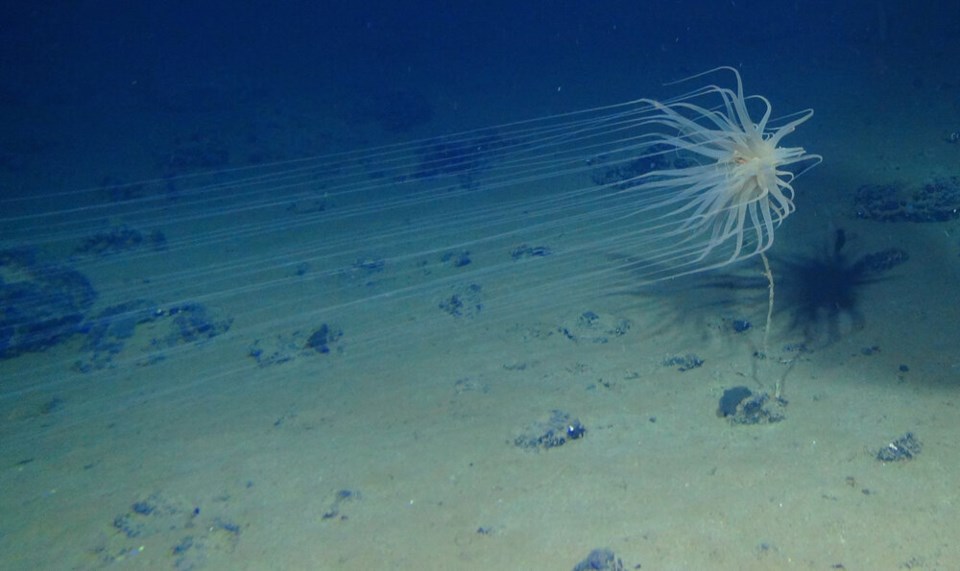
Those concerns extend to seamounts, where some rise to within 500 metres of the surface, said Tunnicliffe.
“It's covered with corals and sponges and all the associated organisms, and it's a great place for fish to congregate and whale migration routes,” she said.
A spokesperson for The Metals Company declined a request to comment on the potential environmental impacts of its deep-sea operations, instead pointing to two studies funded by the company and its predecessor DeepGreen Metals.
One study concluded puts 94 per cent less sequestered carbon at risk than land-based mining.
The other found metal production from nodules “may produce less waste of lower severities” compared to land-based mining.
“Nodule exploitation would damage abyssal habitats and may impact midwater-column organisms,” notes the January 2022 study, “but in the absence of nodule exploitation, terrestrial mining's environmental and social impacts would intensify.”
The caveat, noted the researchers, the disruption of sediment still has “.”
Both studies are co-authored by Erika Ilves, chief strategy officer for The Metals Company.
Rising opposition
The prospect of opening the deep sea to mining has united strong opposition around the world.
At a global conservation summit last September in Marseille, France, 81 nations voted in favour of their own moratorium on deep-sea mining, despite some of those countries holding ISA contracts. Only 18 voted against the motion.
But while many nations have come out in favour of a moratorium on deep-sea mining, Coumans said the Canadian government has, until now, been “sitting on the fence.”
“These are Canadian companies that are in the forefront of this,” she said.
In 2020, MiningWatch, together with 18 other non-governmental organizations and First Nations, to six federal ministers to express their concerns with deep-sea mining.
To date, Coumans says they have yet to see an official response, despite multiple promises from civil servants.
“We were told that the war in Ukraine, that sort of derailed that,” she said.
In an interview, Glacier Media pressed Natural Resources Minister Jonathan Wilkinson to reveal where the Canadian government stands on deep-sea mining.
Wilkinson said his government “would be very hesitant” to be involved in or support deep-sea mining. When asked whether Canada’s ISA delegates will be voting in favour of any new ISA regulations advancing deep-sea mining, Wilkinson said it’s an “active conversation” and that the federal government has not yet made a decision.
“It's certainly something we recognize,” he said. “The clock is ticking and we need to come forward with a position.”
Does a decarbonizing world really need deep-sea metals?
In recent years, many large multinationals have been forced to take a stand against revelations of abuses in land-based mines in places like the Democratic Republic of the Congo. Described by some as a human rights disaster, thousands of young children are often and sent to work in cobalt mines used to feed electric car batteries, cellphones and computers.
Raphael Deberdt, a PhD student at the University of British Columbia’s Department of Anthropology, has spent several years tracking how large companies have responded to calls to responsibly source minerals for the battery industry.
Deberdt says that while the risks of land-based and deep-sea mining are different, the customer perception that a cellphone or car maker is backing a harmful practice can be equally damaging to the company.
Google, the BMW Group, Samsung, Volkswagen and Volvo are among a dozen who have recently backed a call to place a moratorium on deep-sea mining until more is understood about its consequences.
“They’ve looked into deep-sea mining and determined the impacts are too high,” he said.
But none of those companies have contact with the ISA, and Deberdt suspects they’ll have little to no impact on the outcome of the regulatory process.
“I don't think that the ISA actually really cares if Google signs the moratorium,” he said.
In a March 2021 to BMW, Volvo, Google and Samsung SDI, The Metals Company says it’s taking a “precautionary approach” to deep-sea mining. It urged the big brands to hold their criticism until they see the “full data.”
“Will Volvo customers really prefer rainforest metals in their EVs once they realize their dire impacts on freshwater ecosystems, Indigenous peoples, charismatic megafauna and carbon-storing forests?” questions the letter.
The company says it’s currently studying the impact removing the nodules will have on life and says it’s working to mitigate the effect of sediment plumes left behind by its robots and riser pipes.
In the long term, both Coumans and Deberdt say deep-sea mining companies are failing to properly consider a rising movement to recycle batteries.
Coumans points to Redwood Materials, a $1-billion plant in Nevada set up by Tesla co-founder JB Straubel to recover lithium, cobalt, nickel and other metals from old batteries. The facility is expected to re-purpose up to 100 gigawatt-hours of cathode material and enough anode foil for a million electric vehicles a year by 2025.
In a last September, Straubel said that by 2030, production output is expected to climb to produce enough batteries to power nearly half of the United State’s annual vehicle production.
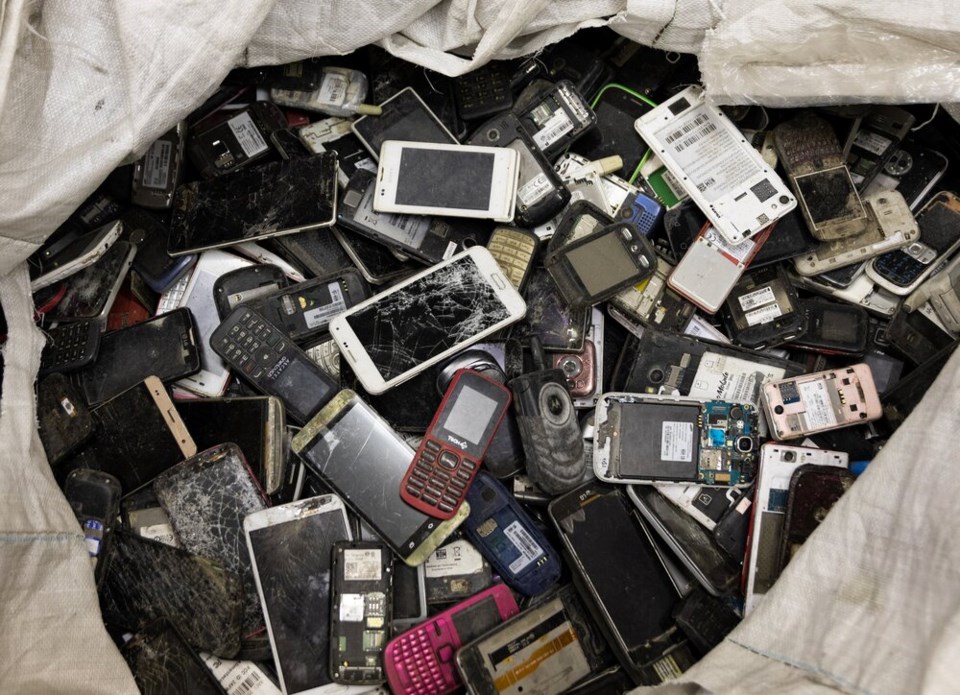
Others are looking to create new battery technologies that use less metals to start with.
At IBM, the company says it has developed a . And start-up Form Energy out of Somerville, Mass., has raised at least $360 million to develop an powered by three of the most abundant materials on the planet — iron, water and air.
“There’s an understanding that we can't mine our way out of the climate change problem. We can’t save the planet by destroying the planet further,” said Coumans.
The hype around deep-sea mining has also been fed by rising geopolitical concerns that Western nations could be left without the metals they need to supply a boom in renewable energy.
Russia is home to the , and two of the top five are Chinese. If relations between Western nations and those countries continue to sour, some worry key mineral supply chains could be disrupted.
“So there we are, stuck with a world that cannot do any kind of diplomacy to try and help share our land wealth. So instead, what do we do?” said Tunnicliffe. “We all dive into another environment and try to ransack that one as well.”
With so much at stake, the appetite to mine the deep appears to be turning, says Kristina Gjerde, a lawyer and senior high seas advisor to the International Union for Conservation of Nature.
Experts say the ISA is rushing to solve a number of , including how an international payment regime would funnel money to countries not involved in the mining.
Another obstacle to adopting new regulations could come in December when a select group of ISA members will meet in a small hotel in Kingston, Jamaica, where the ISA secretariat will need to get a consensus to move forward, says Gjerde.
Opposing countries could also push back by adopting a resolution in the UN General Assembly calling on the independent regulatory body to halt the work.
"It could operate sort of like the whaling moratorium, where governments decided to transition from exploitation to conservation," said the lawyer. “Nothing is inevitable. And governments now have the opportunity to make that critical choice.”
Sitting before a giant aquarium at the UN Ocean Conference in Lisbon last week, French President Emmanuel Macron signalled he would be among the first major Western leaders to make that choice.
"We have to... create the legal framework to stop the high-seas mining," Macron told Gjerde and other experts gathered there."We need to promote our scientists and explorers to better know the high seas..."
"We need to better understand in order to better protect."
